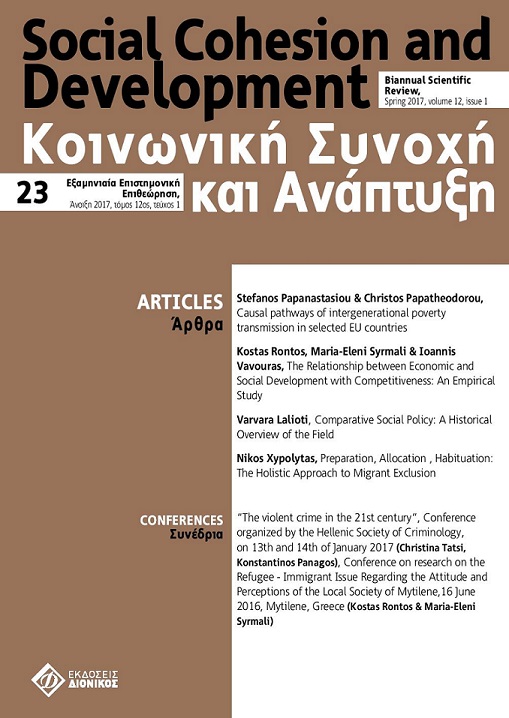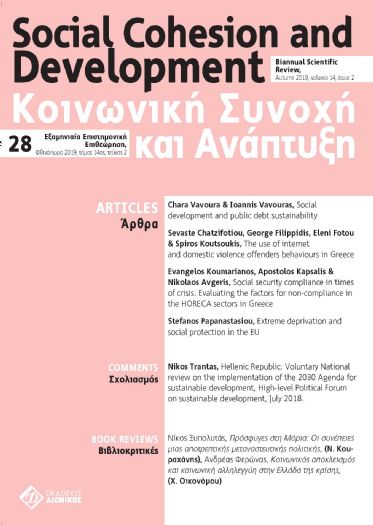The education effect on income across two generations in EU welfare states

Abstract
By utilizing EU-SILC 2011 microdata and employing regression techniques in four EU welfare states (i.e., Greece, France, Ireland and Sweden), this paper demonstrates the diminishing education effect on income attainments between two generations. This finding puts into doubt the main argument of the mainstream academic and political discourse over the prominent role of education for income acquisition. Instead, this paper stresses the importance of other factors explaining
income attainments, such as social interconnectivity. The latter can produce or reproduce inequality as long as people gain access
to powerful positions through the usage of social connections. Thus, the upper social classes with extended social networking preserve their social privileges across generations despite the argument that the contemporary society boasts high social mobility attained through formal education.
Article Details
- How to Cite
-
Papanastasiou, S. (2018). The education effect on income across two generations in EU welfare states. Social Cohesion and Development, 12(2), 101–113. https://doi.org/10.12681/scad.18957
- Issue
- Vol. 12 No. 2 (2017)
- Section
- Articles

This work is licensed under a Creative Commons Attribution-NonCommercial-ShareAlike 4.0 International License.
Authors who publish with this journal agree to the following terms:
- Authors retain copyright and grant the journal right of first publication with the work simultaneously licensed under a Creative Commons Attribution Non-Commercial License that allows others to share the work with an acknowledgement of the work's authorship and initial publication in this journal.
- Authors are able to enter into separate, additional contractual arrangements for the non-exclusive distribution of the journal's published version of the work (e.g. post it to an institutional repository or publish it in a book), with an acknowledgement of its initial publication in this journal.
- Authors are permitted and encouraged to post their work online (preferably in institutional repositories or on their website) prior to and during the submission process, as it can lead to productive exchanges, as well as earlier and greater citation of published work (See The Effect of Open Access).




